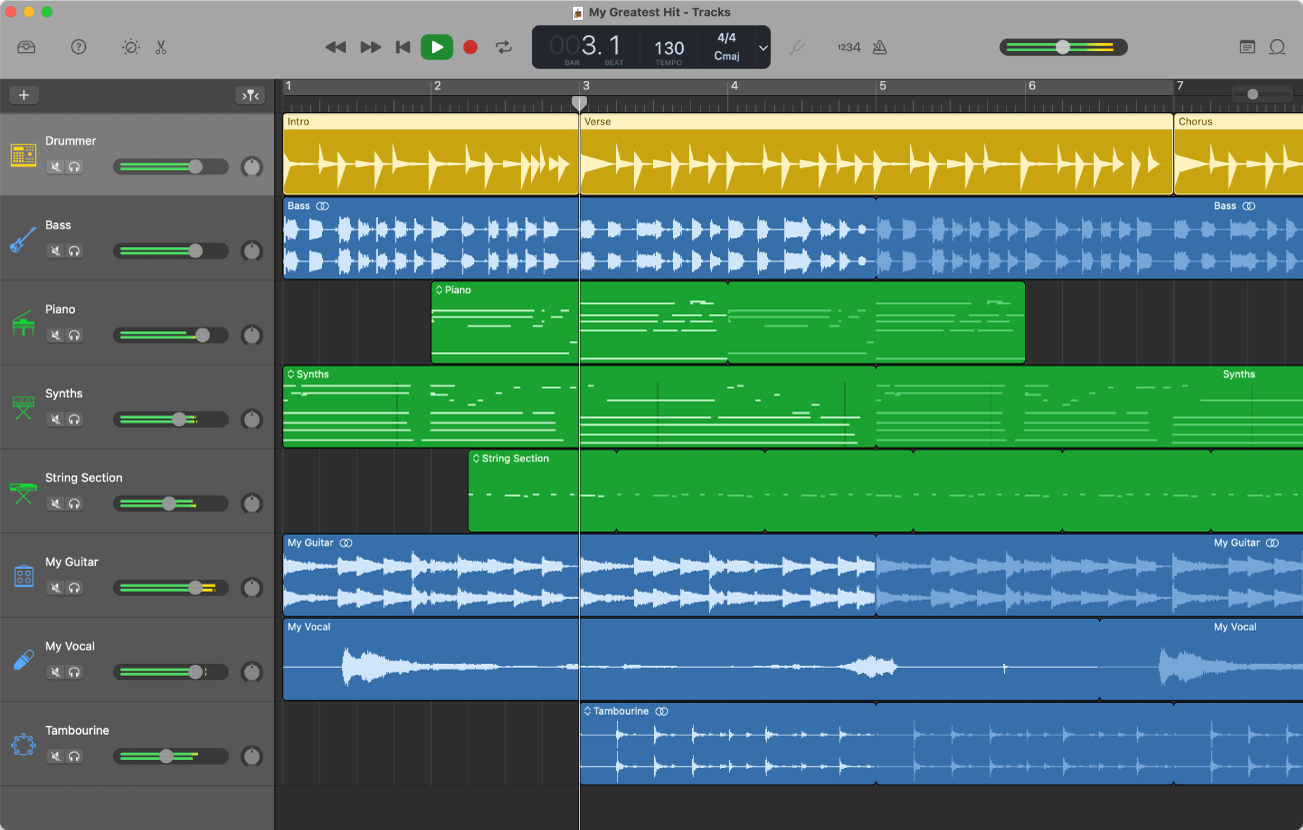

The other buttons will allow you to fast forward, rewind, go back to the start of the track, and play the recorded track. To resume recording from where you left off, just press the red circle again. Press the red circle button, and recording will start. If it is red, or only green, you can move down to the bottom of the screen, to the slider called "Record Level." This will adjust the volume of your voice to be louder or softer as needed.ĥ)To record, go up to the collection of buttons to the left of the top-middle time-recorder. Your audio should always be just on the border between green and yellow. It has a color bar that corresponds to the volume of the audio it is picking up. These are both helpful in music recording, offering a count-in to start recording and a metronome feature, respectively, so they can be disabled for podcasting purposes by just clicking on them.Ĥ) Just below the top menu, you will see a panel that says Audio 1, which is your first track. To the right of this, there is a button with numbers on it and a button with a metronome on it. You can go to the top-middle menu on the screen and select "Time" to focus on the amount of time that passes during each recording you make. In this menu, you can reselect the correct input device in the Audio tab.ģ) Your main project editor should now appear.

If you get past this stage and find that your audio is not recording, head up to the top task bar, click GarageBand, then click Preferences. Some of these devices can be used in GarageBand, while others are stand-alone devices from which you can import your content onto your computer. A list of available devices can be found here. Hope College's Library Tech Desk regularly rents out audio recording devices that you can use in GarageBand. Do not select the input that has two circles next to it instead of only one, as this will create stereo audio which can make your project sound unbalanced.

#Garageband tips mac mac#
If you are using a microphone, make sure that it is selected instead of the regular Mac microphone. A menu will appear below, where you can select the input you plan to use. Click the option that shows the image of a microphone. If you don't have a Mac (where it is preloaded on the system), the tech desk on the library's second floor has Macs with GarageBand installed.Ģ) Launch the app and select "New Project" or "Empty Project," then click "Choose." When the project loads, you will be asked to choose a track type. This doesn't always give great improvements, as results depend on individual system specifications.1) Determine where you will be using GarageBand. A large buffer size will allow you to have a large number of simultaneous tracks, while a small buffer will give a shorter loading time for playback. In the Preferences (in the GarageBand menu) click on the MIDI/Audio tab and set the Optimisation to what you find more important. This will turn the loops into Real Instruments.Ģ.
#Garageband tips mac software#
To convert, hold the Option key when dragging Software Instrument Loops to the timeline. Using Real Instruments instead of Software Instruments will help you avoid crashes and make you Mac run faster, especially during playback. If you are using a G3 or G4 you might find that GarageBand crashes when you try to play a song with lots of software instruments. Software Instrument Loops take a much higher toll on your CPU. The Real Instrument Loops are harder to change as they are just recordings of an instrument playing. The Software Instrument Loops are more customisable as you can change the instrument that plays them and the notes that they play. If you didn't know, Software Instrument Loops are green and have dots on the track while Real Instrument Loops are blue and have audio waves on the track. Turn Software Instrument Loops into Real Instrument Loops.


 0 kommentar(er)
0 kommentar(er)
